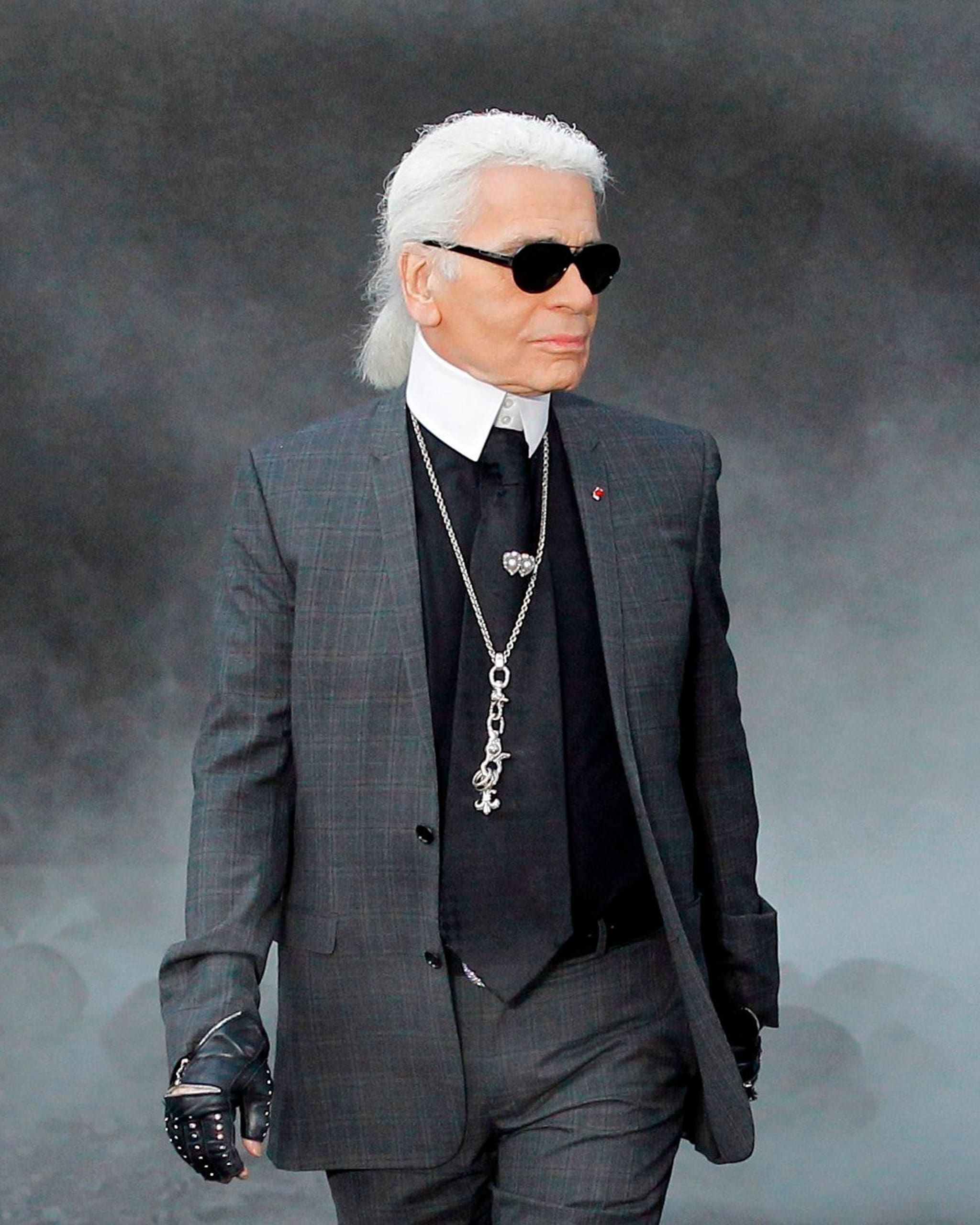Getty Images
Visually speaking, Karl Lagerfeld became the Karl Lagerfeld we’ve all come to revere as an icon in the 1970s with the introduction of his raked low ponytail.
The theme of the Metropolitan Museum of Art’s 2023 Costume Institute exhibition and gala is “Karl Lagerfeld: A Line of Beauty”—and one cannot consider Lagerfeld’s own aesthetic without taking his iconic ponytail into account. Visually speaking, Karl Lagerfeld became the Karl Lagerfeld we’ve all come to revere as an icon in the 1970s with the introduction of his raked low ponytail, a move that, though initially utilitarian, would become an integral part of his outward persona.
According to Caroline Lebar—a longtime colleague and SVP of image and communications at Karl Lagerfeld—the ponytail began as a low-maintenance means of taming soft, face-framing curls. But it evolved into something of a marketing tool. At one point in the 1980s, when considering a slight style change, Lagerfeld was told by a member of Elizabeth Arden’s communications team (with whom Lagerfeld worked on fragrance KL by Karl Lagerfeld) that ditching the pony could be detrimental to future campaigns. “I remember he was like, ‘Can you imagine what she told me? I cannot change my haircut for life now?’” recalls Lebar. After the initial shock, Lagerfeld seemed to relish his low-slung tieback, which Rachael Gibson (a.k.a. The Hair Historian) likens to the 18th-century queue: a mid-length ponytail worn by most men, including in the military where it remained mandatory until the 19th century.

“The queue would typically be worn with a bow, which is something Karl usually did too,” says Gibson. “The signature white finish also seemed to reference the historical use of hair powder, which was used by most people in the 18th century. While hair powder was available in an array of shades, white was considered the most desirable for creating a stately, sophisticated finish.”
Hairstylist and collaborator Sam McKnight notes that the aforementioned finish of Lagerfeld’s tieback came with some side effects. “After he went gray, he loved to spray it with white dry shampoo à la Marie Antoinette and I was always having to dust it off his jacket shoulders when he was being photographed,” says McKnight. “When I launched my own dry shampoo, I made it invisible—but of course that was not what he wanted, so the old white stuff stayed on his table!”
Ultimately Lagerfeld’s ponytail is a lesson in branding. “Karl was a highly skilled and intuitive image maker who knew the importance of a silhouette, much in the same way Warhol did,” says McKnight. “He knew his hair silhouette was instantly recognizable, like many of the immortal cultural icons who are indelibly printed into our brains: Elvis, Monroe, Einstein, Marie Antoinette, HM Queen Elizabeth. With that low pony, his iconic status has endured.”
